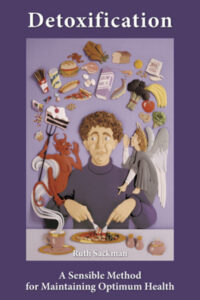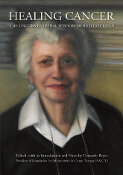“All parts of the body which have a function if used in moderation and exercised in labors in which each is accustomed, become thereby healthy, well developed and age more slowly; but if unused and left idle they become liable to disease, defective in growth and age quickly.”
– Hippocrates, the Father of Medicine, circa 400 B.C.
Life back in the good ol’ B.C. days — before Stairmasters, elliptical machines, stationary bikes and jogging tracks – was very different from today, but the human body has not substantially changed! If you’re interested in attaining and maintaining good health in our modern, fast-paced, stressed out, too sedentary world, it would be wise to heed Hippocrates’ advice and include regular moderate exercise in your life. It’s as important as diet.
Here’s a short summary of the salutary effects of exercise:
- Heart and circulatory system: Regular exercise makes the heart muscles stronger and more efficient. The heart beats of an athlete do not increase appreciably even when doing something requiring physical exertion, and revert very soon to the normal rate afterwards. In contrast, even a little exertion sends the pulse rate of a sedentary individual rocketing up, and it takes time for the heart to settle down to its normal rate of beating.
The blood vessels dilate during exercise, and so more blood reaches the muscles. It has been found that during vigorous or rapid exercise, the blood circulation in certain muscles and organs increases 25 to 30 times, thus supplying the muscles and organs with more oxygen and a larger number of red blood corpuscles.
- The respiratory system: Breathing becomes not only more rapid, but also deeper, thus making increased quantities of oxygen available.
- The digestive system: The secretion of the digestive juices is stimulated by exercise. Thus digestion becomes more efficient. Exercises also stimulate the intestinal movements (peristalsis), resulting in more effective elimination of wastes.
- The musculature: Regular exercise strengthens the muscles, promotes their development and increases their efficiency. Stronger muscles lend better support to the joints.
- The skin: The pores of the skin open up during exercise. The result is a healthier skin, because of more efficient disposal of impurities and dirt.
- Temperature of the body: The temperature of the body rises during exercise. This promotes the burning up of the toxic substances in the body.
At first getting up off the couch may seem like just too much effort, but once you experience the benefits (including increased energy and the celebrated endorphin “high”) of moderate exercise — a brisk walk, up and down the stairs a few times, swimming, dancing, bouncing on a rebounder (mini-trampoline), etc., — you’ll be hooked. It will become a good habit — hard to break.
For those who may be homebound or mobility limited, there are isometrics. This is a form of exercise involving static contraction of a muscle without any visible movement in the angle of the joint, as in regular dynamic exercise — thus “iso” (same) and “metric” (distance). Isometrics have been used for thousands of years, with examples from the static holds in yoga poses or Chinese martial arts.
While dynamic exercises are slightly better than isometric exercises at enhancing the twitch force of a muscle, isometrics are significantly better at increasing maximal strength at the joint angle. Isometric contractions recruit muscle fibers that are often neglected in some dynamic exercises. For example, gymnasts are extremely strong at great ranges of motion through the practice of isometric holds.
Here’s a chart with a basic isometric routine. These don’t take a lot of time and can be done daily at home or office. The tension — hold — release action is also a great way to practice relaxation, letting go. Many people report better sleep after doing isometrics in the evening.
So no excuses now. Use it or lose it!
Isometric exercise is a form of exercise involving the static contraction of a muscle without any visible movement in the angle of the joint. This is reflected in the name; the term “isometric” combines the prefix “iso” (same) with “metric” (distance), meaning that in these exercises the length of the muscle does not change,[1] as compared to isotonic contractions (“tonos” means “tension” in Greek) in which the contraction strength does not change but the joint angle does.
Isometric exercises are thousands of years old, for example, the static holds in certain types of yoga or Chinese martial arts.
Isometrics were first brought to the modern public’s attention in the early days of physical culture, the precursor to bodybuilding. Many of the great bodybuilders of the day incorporated isometric exercises into their training regimes. Contrary to popular opinion, The Charles Atlas “Dynamic Tension” Course did not include any true isometric exercises, but rather Self-Resistance (that is: Pitting one limb against the other) and Bodyweight Calisthenics.[2] which he learned from the “Conscious Evolution” course of Alois P. Swoboda.[3] Isometrics fell out of favor as it was discovered that many of the principal advocates were using anabolic steroids to enhance their gains.[4]
Today many new training protocols exist incorporating isometrics once again. Isometric exercises are often made into parts of normal, isotonic exercises. For example, during a set of rows, some people hold their position when the handles are closest to their chest in order to “squeeze” the muscle, in an effort to further strain the muscle.
Flexibility may be increased when isometrics are performed at joint range of motion extremes.




